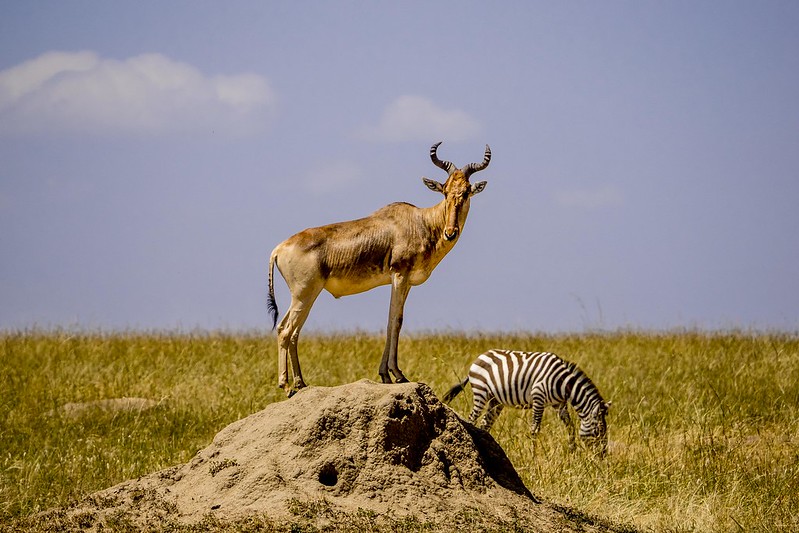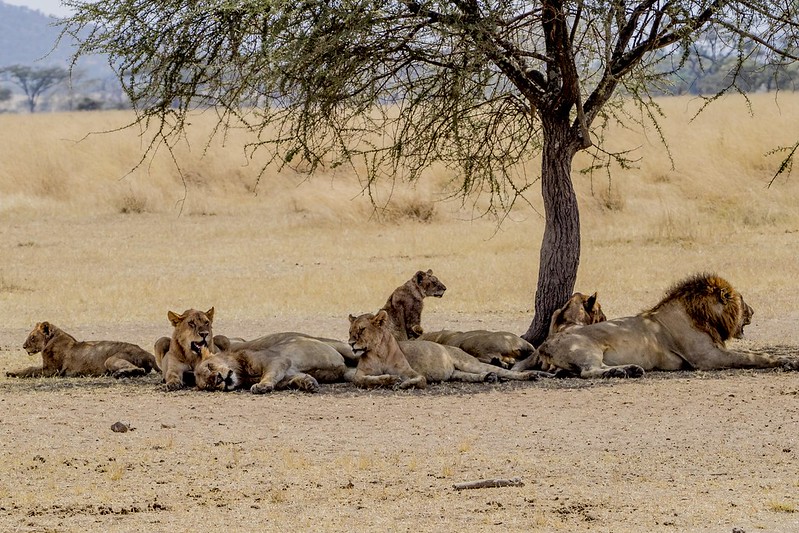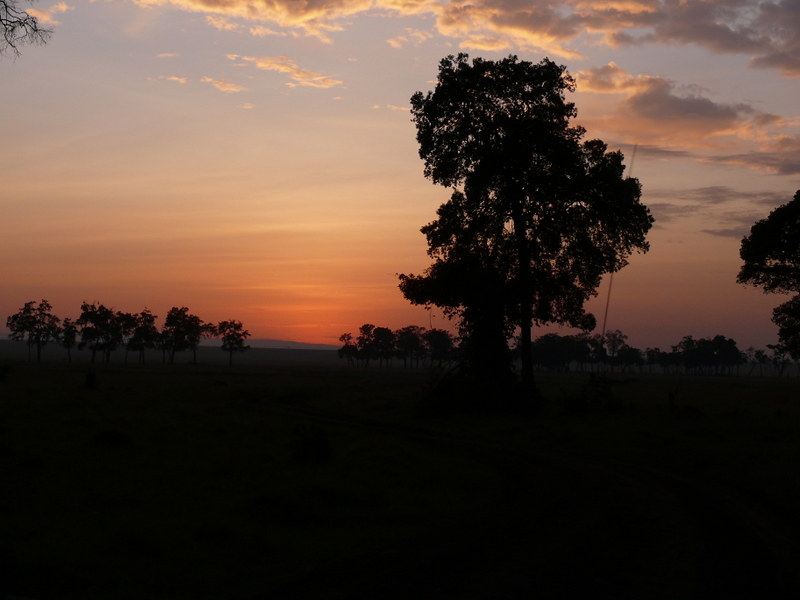A complete guide to Visiting Masai Mara Game Reserve, costs, accommodation, best time to visit and itineraries to the most visited park in Kenya.
How Much Does a Masai Mara Safari Cost in 2025?
1. A Cheap Safari to Masai Mara Costs from $ 180 (USD) per day.
2. Mid Range Safari Tour To Masai Mara Costs from $ 240 (USD) per day.
3. Luxury Safari To Masai Mara Costs from $ 500(USD) per day.
Transport Costs By Road & Air To Masai Mara Reserve Kenya
1. Fly From Nairobi To Masai Mara
Cost: $400 (USD) per person
Flight Duration:45 minutes
2. By Road From Nairobi
Cost: $ 100 (USD) per person sharing (2 people)
We strongly discourage group tours at this time due to Covid 19

Best Masai Mara Safari Packages
3 Day Fly in Safari To Masai Mara
Duration:3 Days
Destination: Masai Mara
Accommodation: Lodge Safaris
Price from $ 1400(USD)
3 Day Masai Mara Safari in The Bush
Duration:3 Days
Destination: Masai Mara
Accommodation: Bush Camping
Price from $ 1300(USD)
4 Days Luxury Camping in Masai Mara
Duration: 4 Days
Accommodation: Luxury Camp
Price from $ 1500 (USD)
3 Day Masai Wildebeest Migration Safari
Duration: 3 Days
Price From: 900 (USD)
Accommodation: Mid-range

Park entrance fees to the Masai Mara National Reserve
Adults residents $70 USD
Adults non-residents $ 80 USD
Children (3 to 18 yrs) $40 USD
The entrance fees that admit tourists into this National reserve defer from whether one is a resident or a non-resident with special discount being offered to the local Kenyan people. Children who are 3 years and below are not charged on entry however there are a number of other affiliated costs including the cost of camping as vehicle entrance fee as we have highlighted in the tables below.
Vehicle entrance fees to Masai Mara National Reserve
1. 45 seats and more
KES 5000
2. 24 to 44 seats
KES 4000
3. 13 to 24 seats
KES 3000
4. 6 to 12 seats
KES 1000
5. Less than 6 seats
KES 400
Cost of Masai Mara Accommodation
- Super Luxury Lodges Costs from $1000 (USD) per night.
- Mid Range Lodges Cost from $ 500 (USD) per night.
- Mid Range Hotels Cost from $150 (USD) per night.
- Cheap Accommodation / Camping Cost from $50 (USD) per night.
Masai Mara offers a variety of accommodation facilities that offer different levels of comfort so the cost of accommodation will be highly determined by the choice of comfort you wish to enjoy on your holiday. They range from the comfortable luxury facilities to the mid-range facilities and then the affordable budget facilities. There are also private and public camping areas best suited for Budget travelers visiting the Masai Mara; these camping areas are safe. looking at the mid-range options of accommodation, this is mainly offered in small lodges as well as tented camps and they offer a reasonable level of comfortable Safari experience on the other hand the luxury hotels and lodges are best suited for holidaymakers willing to spend more and they offer great comfort and amazing service to all their guests.
The Masai Mara safari is a bit expensive from the transport costs, food costs to the accommodation costs especially if you are visiting the reserve as a solo traveler. (A solo safari is where only one person goes for the safari without any other people). however some of the best ways of traveling budget in Masai Mara is by traveling as a group of friends, family, or lovers, or by joining a group / scheduled safari, or by taking a self-guided safari (during which you can get to do personal drives and these allow you to drive through the Masai Mara freely without being limited) in the reserve.

How Many Days Do You Need in Masai Mara?
A 3 Day safari to Masai Mara should be the minimum time spent on a trip.
The number of days you spend on Safari is one of the key determinants of the overall cost of your Safari holiday in the Masai Mara. With regard to this, it is quite obvious that the more days you will spend on safari, the more costly your itinerary will be; a 3 day Masai Mara Safari is cheaper than a 5 Day Safari in Masai Mara. This is so because you will spend more on accommodation, an on the various safari activities as well as on the meals
Cost Of Extra Safari Activities in Masai Mara
Masai Mara Balloon Safari Costs $ 450 (USD) Per Person
Bush Dinners Cost $ 60 (USD) Per Person
Masai Village Tours Costs $ 30(USD) For the entire trip mates
there are a number of activities that you can do in the Masai Mara game reserve and these are priced differently you are highly advised to pay close attention to the number of game drives and other activities included in your itinerary. While in this National Park if the overall cost of your tour is high then to get the best value for your money you should ensure that the number of safari activities that you will have are many as well.
Cost Of Hiring A Safari Guide in Masai Mara
An English Speaking Guide Costs about $ 30 per day.
Non-english speaking tourists are advised to book a guide that speaks your language and it’s with no doubt that this will increase the cost of your safari in Masai Mara. Having a guide will help you enjoy your safari experience as they will offer you all the information you need regarding the different animals, plants, history and culture of the people. An English speaking guide from the park headquarters costs about $30 per day while the luxury, professional guides who also serve as translators (for languages like German, Japanese, Russian, French and Chinese) may cost from $180 per day or more.
Best Time Of The Year To Visit Masai Mara
The time of the year you choose to visit the Masai Mara National Reserve is another determinant of how much it will cost on your Safari. The peak tourist season also known as the high season begins in the month of July to October. Fortunately this coincides with the internationally renowned great wildebeest migration. At this time of the year thousands and thousands of holidaymakers visit the Masai Mara which increases demand on accommodation and other services leading to an overall highly priced Safari tours. For that reason holidaymakers who are budget travelers and are interested in visiting during this time of the year are best advised to book their Safari several months in advance as the safari tour prices tend to increase as the day of the tour comes close. Alternatively Budget Travelers are also advised to visit during the low tourist season which runs from October to December when the country is experiencing the short rains. At this time of the year there are few holidaymakers in the reserve and the prices are normally discounted since the tourist crowd is less however the game viewing wing will still be rewarding.
The Masai Mara can be visited all year round since it offers very remarkable views of wildlife. However, to get a chance to see the great wildebeest migrations that includes nearly two million animals (such as zebras, wildebeests, gazelles and a large number of predators such as lions, hyenas and cheetahs that trail this herd), you can visit from the Month of July to October when the animals are within the reserve.
Masai Mara (Maasai Mara) is located in the South western part of Kenya and is part of the Great Rift Valley. It together with Tanzania’s Serengeti National Park form one of the most diverse, very impressive and incredible eco-systems not only in Africa but the world at large. The Masai Mara National Park covers an area of 580 square miles (1510 square kilometers) at an altitude range of 1500m to 2170m above sea-level, and has different feature that are worth seeing like the unique landscape that includes hills, plains, marshes and the vast grasslands that serve as host to the very large numbers of wild animals, the wildebeest migration and birds making it one of the top wildlife safari destinations in the world.
The larger Mara eco-system is comprised of the Maasai Mara National Reserve, several Maasai Conservancies such as Kimintet, Koiyaki, Oloirien, Lemek, Kerinkani, Ol Chorro Oirowua, Ol Derkesi, Mara North, Naikara, Siana, Olkinyei and Maji Moto, as well as the Mara Triangle.
The Masai Mara is considered and all year round safari destination with very remarkable views f wildlife. However, holidaymakers interested in seeing the great wildebeest migration as well are advised to visit from the month of July to October when the migrating herd has crossed from the Serengeti. From October to March, the reserve is experiencing higher temperatures while from the month of June to August the weather is slightly cooler.
During the June to October season, the Masai Mara is experiencing the dry season and it generally receives minimal rainfall and the day temperatures are very favorable. The rains on the other hand are experienced in two (2) different seasons: the long rains which begin in March to April with the wettest month being April, and then the short rains that starts in November to December.
The Masai Mara national Reserve can be accessed by either road or air transport. it is approximately 40 to 45 minutes flight from Nairobi to the Masai Mara while by road transport the distance from Nairobi to Masai Mara is 270 km and this can be approximated to 4.5 – 5 hours drive. The park can be accessed through the Sekanani Gate as you drive from Narok town, and then through a dusty yet in good condition dirty road. Alternatively you may take the bumpy road through the towns of Lemek and Aitong.
Masai Mara also has a wide range of wildlife that you can view even before the Great migration starts and these include lions, leopards, buffaloes, black jackals, elephants, giraffes, cheetahs, foxes, spotted hyenas and many more other species.
The abundance of wildlife in the Masai Mara is overwhelming as it is one of the best places in Africa to see the Big Five animals with guaranteed views of the African lions, the African elephants, the cape buffalo and leopards with the rhinos being somewhat challenging to see. In addition, the Mara reserve is popular for its numerous large cats in particular; it has one of the world’s highest lion populations in addition to large numbers of cheetahs and leopards plus other predators like the large bat-eared fox, spotted hyena and black-backed jackal. There are also browsers like the Masai giraffe along with numerous grazers such as impalas, topis, Thomson’s gazelles, elands and reed bucks that can easily be spotted on a Masai Mara Safari in Kenya.

A Monthly Guide on what to do in the Masai Mara
Masai Mara is a good place to visit and you can take a safari to Masai Mara all year round and below is a list of what you can do throughout the year when you visit the Masai Mara.
Masai Mara Safari in January – Calving Time, great to see lions and birds.
If you are a fun of bird watching, this is a very good month to visit the Masai Mara. Although January does not receive a lot of rainfall like December, you will be able to see the different birds lazing around the park and some of these include the Little Bittern, African Darter, ostriches, long tailed cormorant, dwarf Bittern, little Grebe, Intermediate Egret, Rufous Bellied Heron and many more unique bird species and January is also known to be a birthing month for many of the animals, so this will give ample time and chance to see the baby animals taking their first steps on earth. This is also a good time to see various predators like lions making their catch. To some tour operators this is also regard as the lion month as there are easier to spot at this time of the year.
Masai Mara Safari in February – Bird watching & wildebeest calving
February is much the same like January receiving an average of 17 days in a month with rain. It is a very good time to see the different local bird found in the Masai Mara National park including the migratory birds from Asia and Europe, and if you are into game watching, you will be able to see the different baby animals in the area. But you should also note that there will be the thunderstorms during this time so it is advisable to carry appropriate clothing for the Safari and most of the wildebeest animals that take part in the great migration are born within this month.
Masai Mara Safari in March (heavy rain) –bird watching
A safari to the Masai Mara in March is good especially for those that do not want a lot of crowds. The Masai Mara receives a lot of rain during this month almost every day and it makes the roads to be inaccessible due to the heavy rains and they become muddy. Some camps and lodges also close during this month due to the bad weather but you can get to see the different migratory birds that fly into the country.
Masai Mara safari in April – perfect for budget travelers
April is the month when the herds start moving North wards from Ndutu and Serengeti after calving. It also receives heavy rainfall and it is known to be the wettest month of the year and if you are not a fan of many crowds, this is the best time to visit. April is the month that receives the lowest number of tourists and once you visit during this period, you will get a glimpse of the start of the migration and a few sightings of animals with a less crowd and not forgetting the discounts given to people from the different camps and lodges.
Masai Mara safari in May (heavy rain)
A safari to Masai Mara in May is not advisable as many of the roads leading to the park are muddy and extremely impassable. The only good thing about May is that the lodges reduce their prices but some of them close due to the heavy rains. Therefore if you are planning your safari to Masai Mara, do not plan for the May month.
Masai Mara safari in June
June is a bit drier as compared to the past three months. The days during June in Masai Mara are cooler and this marks the start of the busy season. You can view the different wild life found in the area although by this time most of the animals from the great wildebeest migration have not yet arrived in the Masai Mara National park.
Masai Mara safari in July – beginning of peak season
This is also a very busy month in the Masai Mara but one of the best months to visit the area as this is the time that some of the animals from the great wildebeest migration start arriving in the area. You will get a glimpse of the world’s 8th wonder when you visit in July. The problem with visiting during this time is that the sightings can be extremely crowded and the prices of the camps and lodges hike due to the large numbers of people who visit during this period. Some of the optional activities to enjoy at this time of the year include hot air balloon rides.
Masai Mara safari in August – wildebeest migration viewing
August is the most expensive month and busiest when it comes to a safari in Masai Mara. During this period, the Great wildebeest migration is at its peak and tourists can easily see the animals as they trek from one place to another due to the thinning vegetation in the area. The thinning vegetation is due to the dry conditions in the area and this causes the animals to move from one place to another in search of food and water giving the tourists the best game view in the Masai Mara. Some of the optional activities to enjoy at this time of the year include hot air balloon rides.
Masai Mara safari in September- wildebeest migration viewing
September has a temperature of 27 degrees Celsius making it slightly hotter than August. The weather condition during this period leads to many animals moving around the Masai Mara and you get a good and clear view of the Great wildebeest migration in full swing as most of the animals by this time have crossed from Serengeti and are traversing in the Masai Mara. There will just a little rain which might disrupt the game viewing for a short time and when visiting during this period, make sure you pack appropriately and note that the camps and lodges also hike their prices during the September month due to the large crowds found in the area. Some of the optional activities to enjoy at this time of the year include hot air balloon rides.
Masai Mara safari in October – game viewing
October marks the end of the dry season and the start of the short rains in the Masai Mara. During this time, the herds will start making their way back to Serengeti in Tanzania through the Loliondo Game Reserve controlled area although some animals can be found still cross marking the Mara River into Kenya. October has very thin vegetation which will help you view the animals with ease and you will also be able to sight some animals still crossing the River. Note that the great wildebeest migration starts leaving Kenya after the start of the rains.
Masai Mara safari in November – bird watching & cultural tours
The November month is the beginning of the heavy rains and this is the time when the Great wildebeest migration returns to Serengeti in Tanzania and you might get a glimpse of these animals trekking back. It is also a good month for bird watching and you can also walk to the neighboring villages and mix with the locals and get to know about the various cultures they practice and get you various souvenirs.
Masai Mara safari in December
December also receives heavy rains which lead to the wild growth of the vegetation and this makes it hard for one to see the animals during this period. This season however is extremely good for birders as you get to see the different bird species in the Masai Mara although you should pack appropriately for the weather and note that Christmas period is always busy.
Birding in Masai Mara
Besides the numerous wild animals, there are over 500 different species of birds found in the Masai Mara living within its diverse habitats such as the grasslands, riverine forest and the swamps and these include: the kori bustards, long tailed cormorant, dwarf Bittern, little Grebe, Intermediate Egret, Rufous Bellied Heron, ostriches saddle-billed storks, ground hornbills, Ross’s turaco, different vultures, several species of kingfishers, 57 different species of raptors and a variety of migratory birds that arrive in this reserve starting in the month of November.
The Great Wildebeest Migration is one of the most renowned and spectacular wildlife phenomena in the world that takes place annually. every year, close to 2 million animals including 1.5 wildebeests, 300,000 gazelles and about 200,000 zebras cross into the Masai Mara reserve from the neighboring Serengeti National Park and this massive march includes the animals crossing the hungry crocodile infested river Mara – a very dramatic scenery and perfect for photography! Consequently, a very large number of holidaymakers visit the Masai Mara on a Kenya Safari Holiday to marvel at this richly endowed destination. This large herd is trained by numerous predators offering holiday makers a very remarkable wildlife encounter experience.
What to pack on a safari to Masai Mara
A good guide book
Comfortable and durable footwear / hiking boots for the outdoor activities such as cultural visits and guided nature walks, and a pair of Flip flops for the evenings back at your lodge
Camera to capture great memories on your safari (with extra batteries) and binoculars
Sweater/fleece jacket for the cold evenings and early mornings
Comfortable and appropriate safari clothing depending on the time of the year you will be visiting. Avoid white and other bright colored clothing that may easily catch / show dirt as the Masai Mara is found n remote Kenya.
Raincoat / wind jacket especially if you are going to travel during the cold rainy months
Sun hat & sunglasses to protect against the strong hot African sun
Sunscreen to avoid sun burns
A touch especially for the nights
Face masks & hand sanitizers; pack extra face marks and an alcohol-base (60%alcohol) sanitizer.











